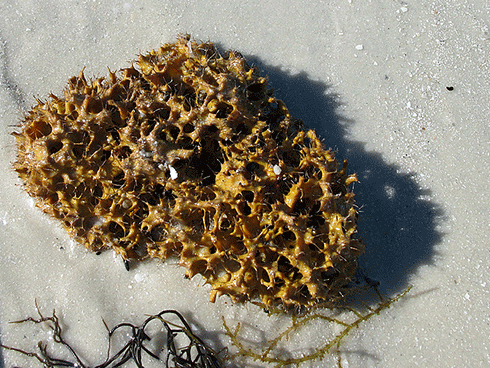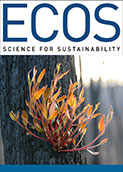
|
Published: 11 August 2014
Sea sponges a soak for sewage
Research into the impacts of sewage effluent on a marine sponge species in waters around Darwin Harbour has uncovered some surprising results, microbes within sea sponges can soak up elevated nutrients such as nitrogen.

|
|
Sea sponges can be thought of as cleaners of the sea. Credit:
Flickr/Kristine Paulus CC BY 2.0
|
Based at Charles Darwin University, North Australian Marine Research Alliance Research Fellow Dr Heidi Luter has discovered that not only are the sponges able to cope with elevated concentrations of nitrogen associated with effluent, but they may also have the potential to soak it up.
‘Levels of nitrogen in coastal areas have been rapidly increasing due to accumulative inputs of sewage and sediments carrying fertilizers,’ Dr Heidi Luter said. ‘Research suggests that sewage effluent has been linked to phytoplankton blooms and reef degradation.’
Vital components to the benthic (seabed) community, sponges are a dominant feature in Northern Territory waters and have an immense filtering capacity.
‘Darwin Harbour has been dubbed a “hotspot” for sponges with more than 800 species recorded so far,’ she said. ‘They are also important filter feeders. A one kilogram sponge can filter up to 20,000 litres of water per day, so if there is something present in the water column, sponges will come into contact with it.
‘Sponges can be thought of as the cleaners of the sea,’ she said.
Dr Luter’s research aimed to mimic nitrogen levels in the water associated with the now closed Larrakeyah outfall sewage site.
‘I looked at the common sponge species, Cymbastela stipitata, and exposed individuals to the highest levels of nitrogen associated with the outfall to see how they would respond,’ she said. ‘As it turns out they are very tolerant to short-term pulses of nitrogen’.
‘Sponges are among the oldest metazoans (about 542 million years) and their evolutionary success has been linked to their intimate association with microorganisms,’ she said.
‘It is through this complex association with microbes that we think they have the potential to soak up nutrients such as nitrogen.’
To find out more, Dr Luter looked further into the microorganisms housed within the sponge.
‘I analysed both DNA and RNA-derived samples to find out what types of microorganisms are associated with the sponge and whether there was a difference between the total and active microbial community,’ Dr Luter said. ‘Although we found no differences between these communities in sponges exposed to high nitrogen levels, we think that some of the microorganisms identified in this sponge may be involved in converting nitrogen to a form that can be used by other organisms.’
Dr Luter said that although she had only looked at one species so far, sponges did not appear to be affected by nitrogen in the same way as some corals.
She now wants to find out what is allowing these sponges to cope by looking into key genes associated with the nitrogen cycle, as well as other genes that may respond to a high nutrient environment.
Source: Leanne Coleman/Charles Darwin University



